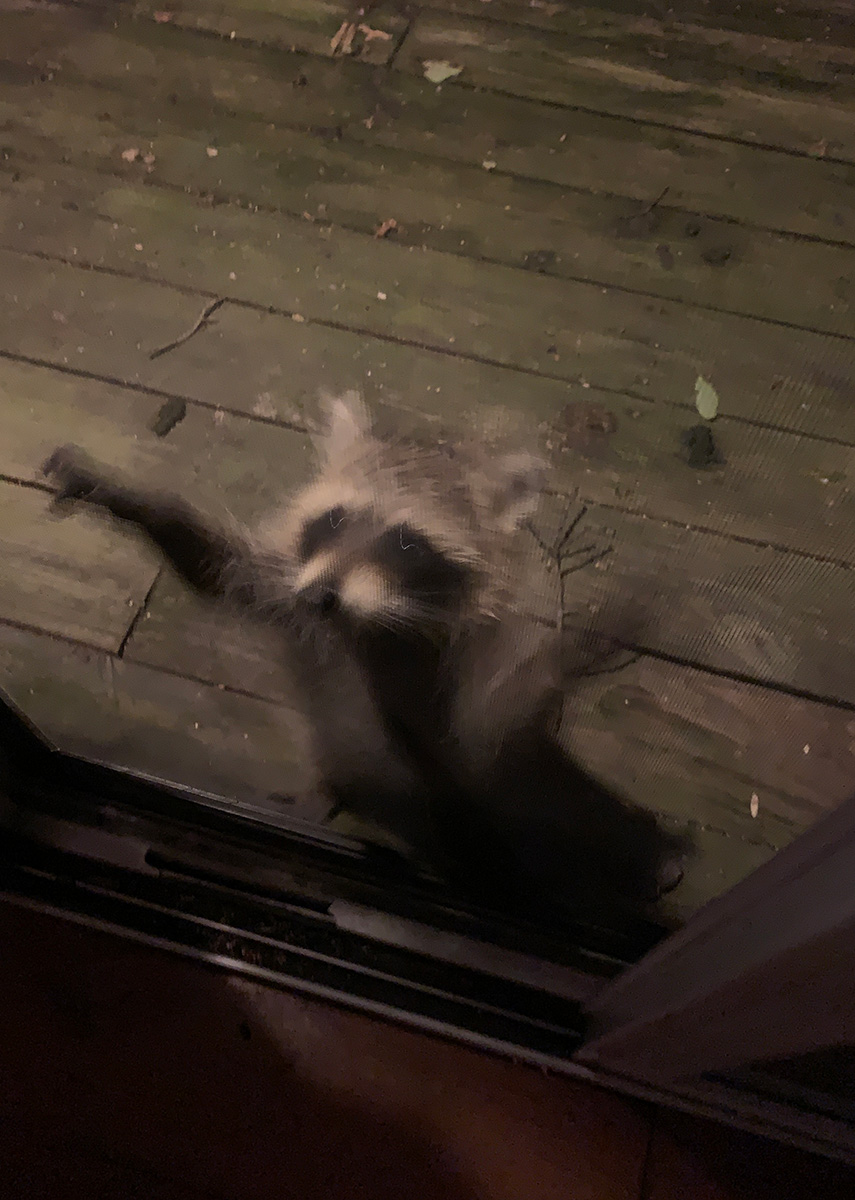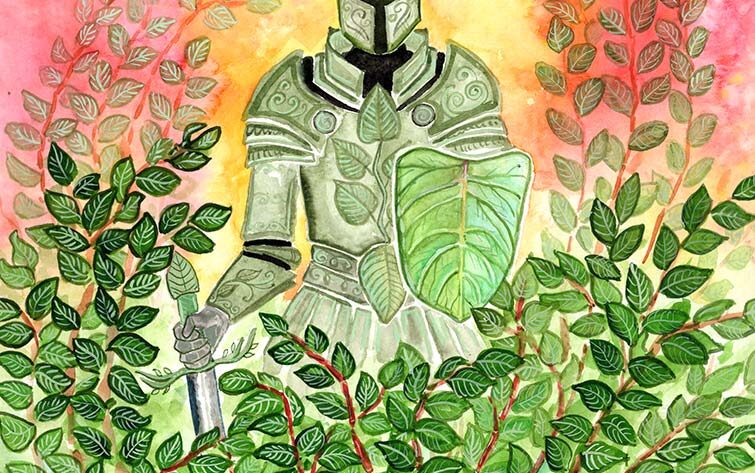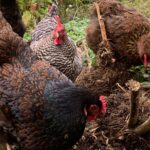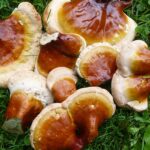One of the most resilient and enduring plants in the world at present is the Japanese Knotweed. Japanese Knotweed is also the number one maligned plant in the world, as it is able to adapt to a variety of ecosystems and thrive in terrible conditions and will continue to grow despite the best efforts at humans to remove her. Japanese Knotweed can withstand multiple direct applications of weed killer and it can handle a wide variety of growing conditions (high and low soil PH, drought, high heat, extreme negative temperatures, flooding, chemical pollution and more). I would argue that the Japanese knotweed is probably one of the world’s most resilient plants, able to resist almost anything that is thrown at it, and despite interaction and engagement with humans, it can thrive. I think it’s interesting that Japanese Knotweed also is an outstanding source of food and medicine, as well as nectar for bees and insects. But if we look to Japanese Knotweed, we see a powerful plant spirit teacher that can offer us a number of qualities that I believe are important for the 21st century, right now, and certainly, into the future. What Japanese Knotweed and many other so-called “invasive” plants teach us is the lesson of resilience.
Another example of an incredibly resilient species is the raccoon, an intelligent omnivorous mammal native to North America. Anyone who has lived in a region with raccoons gets to know them quickly–they are extremely wily, able to break into all sorts of things (like your shed full of chicken food or your chicken coop itself), they can unlock latches, solve puzzles, and have fine motor control. They are quite strong and can break into all sorts of places. Raccoons are now quite effectively adapting to city life, over cities all over the world; even in a place as inhospitable as a city, the raccoon thrives. A raccoon is a being that embodies resiliency–a creature that is cunning, intelligent, persistent, and resourceful. Japanese Knotweed and Raccoons offer us powerful lessons in resiliency–and by studying them and other resilient beings in nature, we can start to consider how ew might cultivate and strengthen our own resiliency in these difficult times.
Resiliency is the capacity to adapt, to endure, to quickly recover if damaged, and to dig in and deal with a set of adverse conditions. I would argue that it is probably the single most important concept that we can explore as humans living in the world today because we face a rapidly changing world with shifting challenges, a changing climate, and increasingly unstable social institutions that no longer offer stability. Thus, as we consider the Spring Equinox as the other “balance point” in the year, our theme today is cultivating resiliency as a spiritual and physical practice.
A 21st Century Wheel of the Year
In this ongoing series, I am offering an alternative set of themes and practices for the 21st century–considering the traditional neopagan wheel of the year in light of some of what we need in order to transition to a new way of living and being so that we can co-exist peacefully with other life on our beautiful earth.
Previous posts have included receptivity at the Fall Equinox; release at Samhain; restoration at the Winter Solstice, and Reskilling at Imbolc. If we think about this alternative wheel I’m proposing, it is taking us on a powerful journey to strengthen our spirits and improve our physical and emotional skills to move forward. Thus, as we enter the dark half of the year at the Fall Equinox, we start by being open to change and accepting what comes. We release pain, sadness, anger, and other negative emotions surrounding our predicament at Samhain, follow up with restorative and renewal activities at the Winter Solstice, and then at Imbolc, start to move into the action at Imbolc with reskilling. You can see through this wheel how it is a journey–of releasing expectations, dealing with our own emotions and trauma, restoring and healing ourselves, and then moving into activities that help us prepare for what is to come. As we move into the balance point at the Spring Equinox, we tackle one of the most critical themes yet–resiliency.
Features of Resilience

One of the tragedies of modern civilization is that it has created generations of people who are inflexible, vulnerable, and fragile–humans who have a hard time adapting to change and who are incapable of living without modern conveniences. Our modern way of life has cultivated a deep dependency on the current systems we have in place to feed us, clothe us, provide food for us, and offer us a host of other comforts. The system has been engineered for modern humans to depend fully upon it for their every need. And yet, if the last few years have taught us anything, it’s that the very systems we depend on are more fragile and unpredictable than we thought, and this problem will only grow so as time passes. The solution to this problem is in reskilling and resiliency. It is in finding ways to depend less upon the problematic systems and instead look to nature directly for our needs.
As Wendell Berry notes in The Unsettling of America: Culture and Agriculture, one of the things our civilization has demanded are increasing degrees of specialization–and with the rise of super-specialists, we lose our ability to take care of our basic human needs. He advocates a return to the ways of the generalist, where we cultivate a wide range of skills–and in so doing, develop more powerful methods of being resilient. If you think about it, it makes –throughout human history, nearly all humans had a basic set of skills that allowed them to clothe themselves, feed themselves, provide shelter, find clean water, perform healing, and a host of other basic needs. It is only with the rise of industrialization and the modern era that these have been forgotten. But if we are going to be more resilient, its useful to think about how we can return to some of these ancestral ways.
Resiliency is a combination of having the right mindsets and being able to solve problems (drawing upon skills, knowledge, and resources). It is about having a positive mindset, cultivating a creative and adaptable way of thinking, along with having a toolbox of skills, techniques, and knowledge that you can draw upon as needed. Since we’ve already covered the skills in discussing reskilling and Imbolc, today, I want to focus on cultivating resilient mindsets, which involve a host of factors.
- Recovery. Perhaps the defining feature of resilience is the ability to recover after a serious setback, challenge, or trauma. Rather than giving up in defeat or accepting your setback, when you cultivate recovery, you cultivate an ability to find a way forward.
- Being adaptable Tied directly to recovery is adaptability, or being able to pivot quickly in the event of adversity or difficulty. Being adaptable allows us to face challenges and changes quickly and effectively.
- Accepting Change and accepting what we cannot change. A necessary part of recovery and adaptability is being willing to accept change. It seems like a simple thing, but it is truly a difficult thing to do for humans to do, particularly those in modern cultures.
- Seizing Opportunity. Capitalizing on opportunity is another key feature of resilience. be like the dandelion that grows out o the crack in the sidewalk–see where changes have created new opportunities, and anticipate those.
- Applying Creativity. A lot of resiliency is about creative problem-solving. How can you do something in a new way? How can you meet a need when what you used to use to meet it is no longer available?
Just as the Japanese Knotweed and raccoon can offer us powerful lessons of resilience, we can begin cultivating resilience in our own lives by observing the lessons of nature. Even in a stable climate, all of nature requires resourcefulness to survive, thrive, and adapt. When you spend time in the natural world, you are reminded of these powerful lessons.
I actually went into great detail about physical and mental resiliency in my post last year, so I’m going to direct you there for more on physical residency. For the rest of today’s post, I’ll focus on a specific ritual and spiritual journey you can do at the Spring Equinox that can help you cultivate a more resilient mindset.
A Spring Equinox Resilience Ritual and Journey
Of course, mindsets determine actions. If we can cultivate resiliency within, then when times get tough on a physical level, we are drawing upon that well of inner resiliency. What I describe is a practice that I’ve been doing for a number of years that helps me learn deep lessons from nature from my local ecosystem. You can start this journey at the Spring Equinox, but it does have the option to lead you to deeper work throughout the year.
Step 1: Seeking a Resilient Plant or Animal Teacher

The first step of the journey is going out into the world and deeply observing and interacting. Your goal is to find a plant, animal, or even insect that offers resiliency. This animal or plant should be something that you can directly observe or see the effects of that animal (e.g. if you are looking for a raccoon, you might not be able to see them directly but can see their tracks and/or put up a trail cam to learn more about their activities). Plants are obviously a little easier, you may just find them growing and can observe. I’ve given two examples at the start of this post of those I’ve worked with: the Japanese Knotweed and the Raccoon.
Thus, start by going out and setting your intentions for this work. Go outside to a quiet place, and speak directly to the world around you. Ask, in your own words, for nature to send you a messenger or teacher that will teach you about resiliency. Then observe, interact, see what you find and who comes to you. Use your intuition here–see where you are led and drawn. Accept whoever comes to you (it is so much better for this work if we set aside preconceived notions or expectations).
This kind of approach can be done anywhere: urban, rural, wild places, etc. It is as effective in an urban environment as in a wild one–for example, I once did this while I was in New York City, and I spent three lovely days observing and learning from the city’s pigeon population–they were amazing to see how adaptable and cunning they were.
Step 2: Outer Observations
Once you’ve found a resilient natural teacher who you are drawn to, spend time observing and interacting with your animal or plant teacher. Learn what you can about them. Observe them in the world in whatever ways you can. Consider how they offer lessons in resilience.
For example, if you decide to focus on dandelion (a perfect choice this time of year), you might spend time seeking out dandelions in your town, looking at how and where they grow. You might draw upon what you already know about the dandelion.
Step 3: Spirit Journey for Deep Teachings
Any physical connexion is going to help you open up a spiritual connection. In the druid tradition, many of us work with the idea of an “inner grove” or a space that we have on the astral that is safe and that we visit often (different traditions teach this differently, but it seems to be a common feature)*. This journey uses the inner grove as a starting point for a journey with your chosen plant or animal teacher. If you are new to spirit journeying, you might check out this post.
Begin by opening up a sacred space (I use AODA’s solitary grove opening). Once your sacred grove is open, you will want to put yourself into a quiet, focused place. For this, I suggest getting into a comfortable position and doing some of the four-fold breath: breathe in for four counts; gently hold for four counts; breathe out for counts; gently hold for four counts, and repeat. After a few minutes of this, you should have quieted your mind and prepared yourself for the journey.
Now, speak your intentions about the journey in your own words. For example, “Dandelion, I seek your continued teachings to help me cultivate resilience in my life. Will you come and offer me your spirit teachings?”
Now, enter your inner sacred grove. If this is a new activity for you, most people first envision themselves on a path into the forest. Work to build your inner senses, noting the colors, shapes, smell, sounds, as you walk. As you enter your grove, your animal or plant teacher will be there to guide you on a journey.
Once your journey is finished, offer gratitude and respect to your plant or animal teacher.
Step 4: Gratitude and Offerings
At the end of this process, I strongly suggest making some kind of meaningful offering to the plant or animal teacher on the physical world. Leave food offerings out for the raccoon, help spread the seeds of the dandelion, create positive artwork about the Japanese Knotweed, or whatever other gifts of your time and energy you can.
You might find that this plant or animal will continue to be a teacher for you, offering lessons. Or it may be that you will need to seek them out again. Whatever your longer-term relationship is, know that you can always continue to meet with them physically and metaphysically to learn more and grow.
Conclusion
The above is a great way to start thinking about resilience as a spiritual practice and how we can begin to cultivate and integrate a mindset of resilience. I think that when we can do the work of spirit, then it becomes easier to manifest that into our physical existence. I’m also grateful of the many lessons of Japanese Knotweed, Dandelion, and Raccoon–what they have taught me has helped me to learn to be adaptable, resilient, and strong in the face of so much.




I need to re-read this as well as some of the links, but I have to reply tonight after the news of the day has advised me that a cyber attack may be imminent which will cripple our utilities, including water, food delivery, and fuel availability. Tomorrow I use gasoline I had not expected to use to fill the car, pick up additional water storage, and look at on-hand food supplies. Resilience is a lesson we may be required to learn whether we’re ready or not.
It’s good it’s spring because there is much wild food growing on our land.
I think its always good to be prepared for anything! And I do think a lot of us will be learning resilience, as you said, whether or not we want to. It is the nature of the world right now.
Hi. Thanks so much. I love your posts. One question please. What medicinal uses are there for Japanese knotweed? These are never talked about …
For me, the first daffodil signals mid-spring. I celebrated with an “obnoxious weeds” salad. Prunella, dandelions, hairy bittercress, and wild onion. Dressed with juice from pickled eggs. Such abundance through no effort of my own! Plus trays of them drying for future use. And I roasted some dandelion root. Resilience is enjoying earth’s bounty. I used to curse these plants in my garden. Now I bless them as they bless me.
[…] A 21st Century Wheel of the Year: Resilience at the Spring Equinox […]
Thank you for the reblog!
[…] A 21st Century Wheel of the Year: Resilience at the Spring Equinox […]